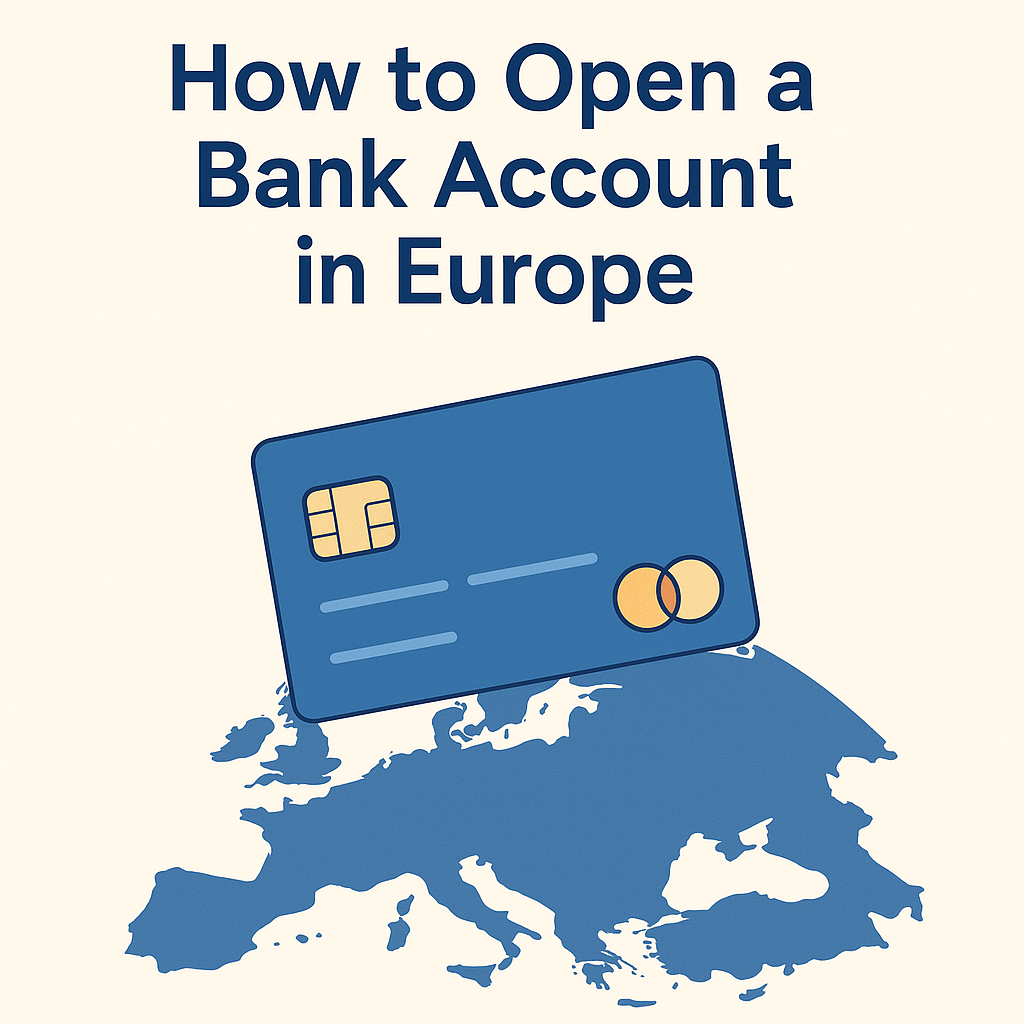Opening a bank account in Europe is an essential step for anyone planning to live, work, study, or invest across European countries. Whether you’re a resident, an expatriate, or a digital nomad, having a European bank account simplifies payments, savings, and international transactions.

This detailed guide will walk you through the full process, from preparation to activation, including all necessary documents and tips for choosing the right bank.
Why Open a European Bank Account?
- Convenience: Pay bills, receive salaries, and shop with ease.
- Lower Fees: Avoid international transaction charges.
- Access to Local Services: Many services require a local IBAN.
- Efficient Money Management: Manage income and expenses in euros or local currencies.
Step-by-Step: How to Open a Bank Account in Europe
Step 1: Define Your Needs
Before choosing a bank, identify your goals. Ask yourself:
- Do you need the account for personal or business use?
- Will you be receiving income locally?
- Do you need multi-currency support?
- Will you be sending or receiving international transfers regularly?
Your answers will help you choose the right type of bank and account.
Step 2: Choose Between Traditional and Digital Banks
Europe offers a variety of banking options. You can choose from:
Traditional Banks
- Physical branches
- In-person customer service
- Full range of services (loans, mortgages, credit cards)
Digital Banks
- Online-only services
- Easy account setup, often in minutes
- Lower or no maintenance fees
- Great for expats and digital nomads
Popular digital options include N26, Revolut, Wise, Bunq, and Monese.
Step 3: Select the Country and Bank
Each country in Europe has its own regulations and documentation requirements. Consider:
- Residency requirements
- Language support
- Banking fees and transaction limits
- Mobile app quality and available currencies
If you’re relocating to a specific country, choose a bank based there. If you travel frequently, a digital bank with pan-European services may suit you better.
Step 4: Gather the Required Documents
Though requirements vary by country and bank, most institutions will ask for:
- Passport or National ID
- Proof of Address (utility bill, rental contract, or tax letter)
- Tax Identification Number (TIN) from your country of residence
- Proof of Income or Employment (employment contract, payslips, freelancer invoices)
- Residence Permit or Visa (if applicable)
- Phone number and email address
Having digital copies prepared will speed up online applications.
Step 5: Submit Your Application
This can usually be done:
- Online (most digital banks and some traditional banks)
- In person (at a branch if required)
- Through a mobile app (if the bank offers one)
Be sure to double-check your information and submit all requested documents. Incomplete applications can delay the process.
Step 6: Verify Your Identity
Verification methods include:
- Video call verification
- Selfie with your ID document
- In-branch visit (traditional banks)
Digital banks typically complete this step within minutes or hours. Traditional banks may take longer due to manual processing.
Step 7: Account Activation and Setup
Once verified and approved:
- You’ll receive your account details (IBAN, account number)
- Your debit card will be mailed or activated digitally
- Set up your online banking and mobile app
- Activate two-factor authentication for security
- Add your first deposit to start using your account
Tips for Non-Residents
Opening a bank account in Europe as a non-resident can be challenging, but it’s possible with the right approach:
- Opt for digital banks with less strict residency rules
- Choose banks that support international clients
- Provide all documents up front to avoid delays
- Look for banks that offer multi-language support
Some banks, especially digital ones, do not require proof of a local address or tax number.
Common Mistakes to Avoid
- Missing documents: Double-check what’s required before applying.
- Wrong account type: A business account used for personal transactions may incur extra fees.
- Ignoring fees: Some banks charge for ATM withdrawals, currency exchange, or monthly maintenance.
- Skipping security settings: Always set up PIN codes, biometric logins, and 2FA.
Final Thoughts
Opening a bank account in Europe is more accessible than ever, especially with the rise of digital banking. Whether you’re moving to a European country, starting a business, or simply want better control over your finances, the key is preparation.
Choose the right bank for your needs, gather the correct documents, and follow the step-by-step process to enjoy a smooth banking experience across Europe.
